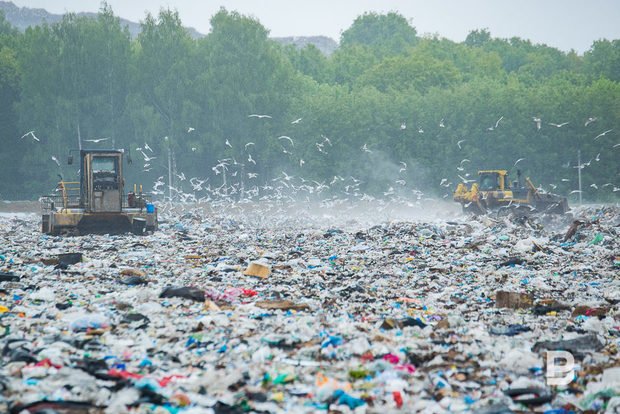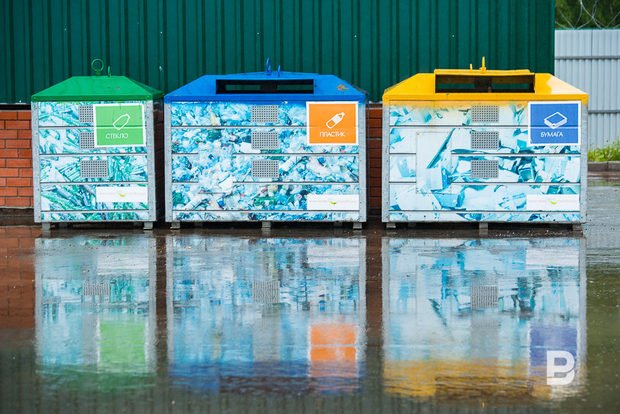Blast it all: WIP can’t be built at the drop of a hat
The World Bank whispers: the construction of the incineration plant is both a challenge and development indicator
An incineration plant is a complicated enterprise in terms of technology and business, warns UN expert in estimates of environmental changes, specialist in environmental policy of Platform XXI Centre of Strategic Research Nikolay Dronin in his column written for Realnoe Vremya. The ecologist talks about the pros and cons of these facilities and urges to weigh everything up before making a decision to construct them.
In its special methodological recommendations for the construction of waste incineration plants (WIP) for developing countries, the World Bank writes that before starting the construction of such a plant, the government of any of the countries should think and answer the question: why it doesn't like simple waste storage in no-man's-land or depleted quarries (if you don't have an acute shortage of land or suitable parcels are remoted, and, consequently, future transport costs are very high).
Meanwhile, the guideline warns such countries' governments won't be able to do it on their own: there will be enough qualified staff for neither construction nor technical maintenance of the factory. They will have to invite foreign specialists like it's presupposed in the case of Yadrovo site near Moscow.

Any serious undertaking, which is somehow linked with ecology, has its own pitfalls. So before inviting foreign specialists to construct such a plant, they will need to arrange normal civilised refuse collection, transportation and storage. There are different reasons for it. Rubbish must be combustible, and if informal landfill sorters and diggers take all waste paper, cardboard, plastic and other materials that burn well, the level of the heat capacity of municipal solid wastes (MSW) will fall lower than 7 MJ/kg. Waste must be collected and kept in closed containers, as increased humidity and ash content considerably reduces thermal properties of MSW. The morphological composition of wastes can be very heterogeneous and in our conditions depends on weather and seasons of the year. During the seasons when MSW heat capacity reduces to critical 6 MJ/kg, one should add more combustible wastes of industrial origin. In any case, a detail examination of MSW composition in different seasons of the year is needed. It's very important to provide an uninterrupted supply of waste all year round. A typical plant consumes no more than 20% of average indicators. All ways and supply sources must be provided 15 years beforehand.
One also should realise that incineration of rubbish in plants is a business, not charity. The plant must pay back. This can be achieved with the help of three sources. Firstly, higher refuse collection bill and its destruction. An average family ''produces'' from 1 to 2 tonnes of rubbish a year, and payment for waste disposal can be no less than US$ 50-100 a year, which is just a bit higher than current waste collection bills. Secondly, combustion residuals can be used, for instance, like road construction materials. Thirdly, and most importantly, it is necessary to provide production and supply of either heat or electricity or both to the consumer. Heat and electrical energy are generated when steam boilers are heated. These boilers are a necessary chain in the production process because their direct purpose is to cool landfill gases to 200°C. It's the level at which treatment facilities can catch toxic substances. Tariffs and distances from plant to consumer are the problems here. If the latter is near the plant, it's easier to generate and transport heat. If it's far, it will be necessary to arrange electrical energy production, which is less profitable because generated heat will be wasted. It's preferable to define one electrical energy or heat consumer and come to an agreement with him before starting the construction.

As for tariffs, benefits for energy generators by means of waste incineration can be good support. The benefits can be explained by the fact that waste can be considered as biofuel, which belongs to alternative (green) energy sources in many countries. Without making a political decision to provide such benefits, the work of WIP can be economically unprofitable.
The World Bank's guideline warns of not a small price for disposal of the plant's emissions. They contain dust, sulfur dioxide, nitrogen oxides, hydrochloric acid, hydrofluoric acid, mercury, arsenic, lead, dioxins. Modern technologies enable to detect all these toxic substances, but their disposal degree will directly depend on treatment facilities' price. The most inexpensive option presupposes installation of an electrostatic precipitator, which enables to effectively catch dust. In addition, together with dust, many metals absorbed on particles of its fine fraction will set. A more expensive option presupposes installation of dry and wet scrubbers to catch gas contaminants. To get rid of mercury and dioxins, more expensive devices will be needed that will noticeably raise the cost of the plant's construction. The pipe's height must be no lower than 70 metres. And in any case, it must be higher than the buildings that are located in the radius of up to 1 km of the plant.
The methodological recommendations we allude to here are written in a way as if its authors wanted to reassure from the construction of incineration plants by emphasising that the countries that aren't socially and economically developed enough can't cope with it. Indeed, the construction of such a facility is both a challenge and development indicator. Its normal operation will mean the sphere of refuse collection and disposal finally was put in order. However, the choice of technologies is critically important, in the end, whether there will be a common positive or negative effect on the construction territory from the WIP construction will depend on it.